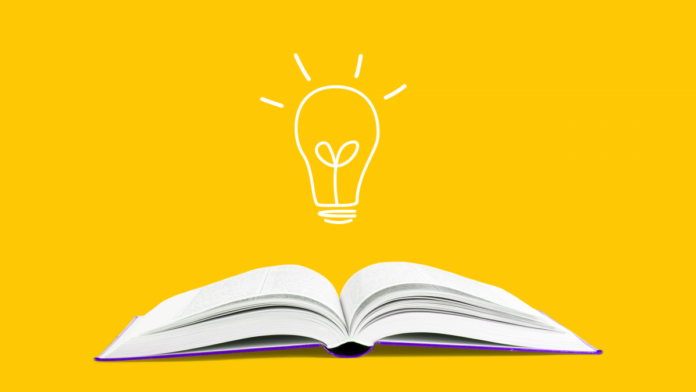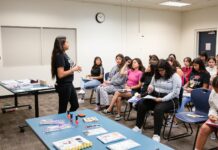By: JANICE RODDEN
Published in The Checkup by SingleCare
Medically reviewed by JEFF FORTNER, PHARM.D.
OCTOBER 7, 2019
What is health literacy?
Health literacy is the patient’s ability to “obtain, process, and understand basic health information and services needed to make appropriate health decisions,” according to the U.S. Department of Health and Human Services. Examples of health literacy include knowing how to fill out forms in the doctor’s office, comprehending laboratory values—like cholesterol or blood sugar numbers, choosing between different health care coverage, or grasping how to properly use prescriptions. It affects how well people can access medical services, care for any dependents, and conceptualize their own health risk. People with low health literacy often also have misinformation about what causes disease and what can prevent it. That can mean poorer health outcomes.
Why does health literacy matter for pharmacists?
Only 12% of adults have proficient health literacy, according to the Agency for Healthcare Research and Quality (AHRQ). Meaning, the vast majority of patients may not be able to read and fully understand their prescription labels or follow-up instructions. And that can cause medication errors or other risks, such as increased mortality or visits to the emergency room. “Pharmacists can prioritize making sure that patients understand what they need to know and do for adherence to their medications,” explains Ruth Parker, MD, professor of medicine at Emory University. “This can be especially daunting for patients on multiple medications who are simultaneously navigating the demands of chronic illnesses.”
How do you do it? Start with these steps.
How to improve health literacy
Taking steps to improve your patients’ health literacy can increase their investment in their own health, and build trust.
1. Assess your patient’s health literacy.
The first step to improving health literacy is identifying who’s at risk for low health literacy. This can be as simple as asking patients if they understand what certain terms mean. Be aware of phrases or behaviors that might indicate low health literacy, such as referring to pills by their color or shape rather than the medication’s name, or saying they will bring the medications home to talk about them with their kids.
Or, you can use one of the tools provided by the AHRQ to measure understanding, such as the Rapid Estimate of Adult Literacy in Medicine or the Short Assessment of Health Literacy in English or Spanish. Many people don’t understand medical abbreviations or terms like discontinue, as directed, or dosage. The assessments can help you determine what type of information you need to explain. The AHRQ also offers Health Literacy Tools for Use in Pharmacies, which includes info to increase pharmacy staff’s understanding of health literacy and how to communicate more effectively with patients.
2. Use “Ask Me 3.”
Some patients don’t know what to ask their physicians, feel ashamed of low literacy, or are socialized not to ask questions of authority figures. The Ask Me 3 campaign encourages patients to start a conversation with healthcare providers by asking:
- What is my main problem?
- What do I need to do?
- Why is it important for me to do this?
Pharmacists can encourage patients to use these guidelines by providing the answers in plain language—meaning no technical terms or jargon. Use an active voice that is clear and direct when communicating, and break complex information into chunks. Encourage patients to “teach back” what they’ve learned so they don’t walk out of the pharmacy and immediately forget what you explained. For instance, one way to initiate a teach back after counseling on a medication is to say, “Just to be sure we covered everything, would you please tell me how you’re going to use your medication?”
3. Explain the details of prescription labels.
If patients don’t know what a medication is for or can’t find the instructions on the label, they’re not likely to take it. Most people can’t easily spot the dosage and timing on a prescription label, and patients with low health literacy are likely to overlook the warning stickers on the side. So during a consultation, point out the info on the medication label or consumer information leaflet while you’re discussing it, so they know where to look if they need a reminder later.
Take the time to go over how the patient should take the pills, and what’s important to remember or avoid—such as heavy machinery or grapefruit juice. “Encouraging use of patient-centered medication label standards such as those proposed by the USP and going beyond the ‘do you have any questions?’ to engage patients in conversation that demonstrates their understanding of what medicines they are taking and how to take them correctly are important steps,” says Dr. Parker.
4. Create reminders or quick reference tools.
Juggling multiple medications can be challenging for anyone, especially so for someone with low health literacy. Many pharmacies use automated phone, text, or email reminders to notify patients when they’re due for a refill. Check to make sure that the text or audio reminder script your pharmacy is using makes sense for people with limited medical knowledge, using the AHRQ guide.
Consider creating a pill card for patients with many medications taken at different times, or share a template they can use to create one at home. Or, hand out additional literature the patient can read at home, which also use understandable and appropriate language.
The patient has already left the doctor’s office or hospital, and may not have a follow-up visit, by the time they arrive in your pharmacy. Picking up a prescription from you may be the last opportunity patients have to ask a healthcare professional about what to do, and how to do it, before going home. Don’t let the chance slip away unused.
Source: https://www.singlecare.com/blog/pharmacists-health-literacy/
Analysis:
I chose this article for pharmaceutical literacy because it showed how pharmacists could improve literacy at a local/community level with face-to-face interaction. It was also interesting to realize the data and facts surrounding pharmaceutical literacy – in that only 12% of the U.S. population is proficient in health literacy. It was interesting to note that “Most people can’t easily spot the dosage and timing on a prescription label, and patients with low health literacy are likely to overlook the warning stickers on the side.”





I also happened to explore this article in my search and found similar comparisons and observations in relation to the percentage and level of literacy amongst patients. The methods described seem to appear in multiple occasions and allow simple methods to connect with the patient and not only asses their knowledge, but also allow the pharmacist to better inform and ensure the information about the medication is received by such patient.